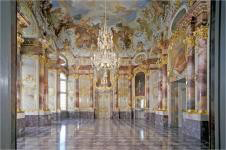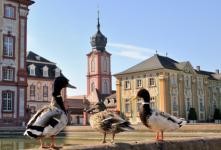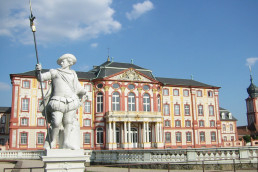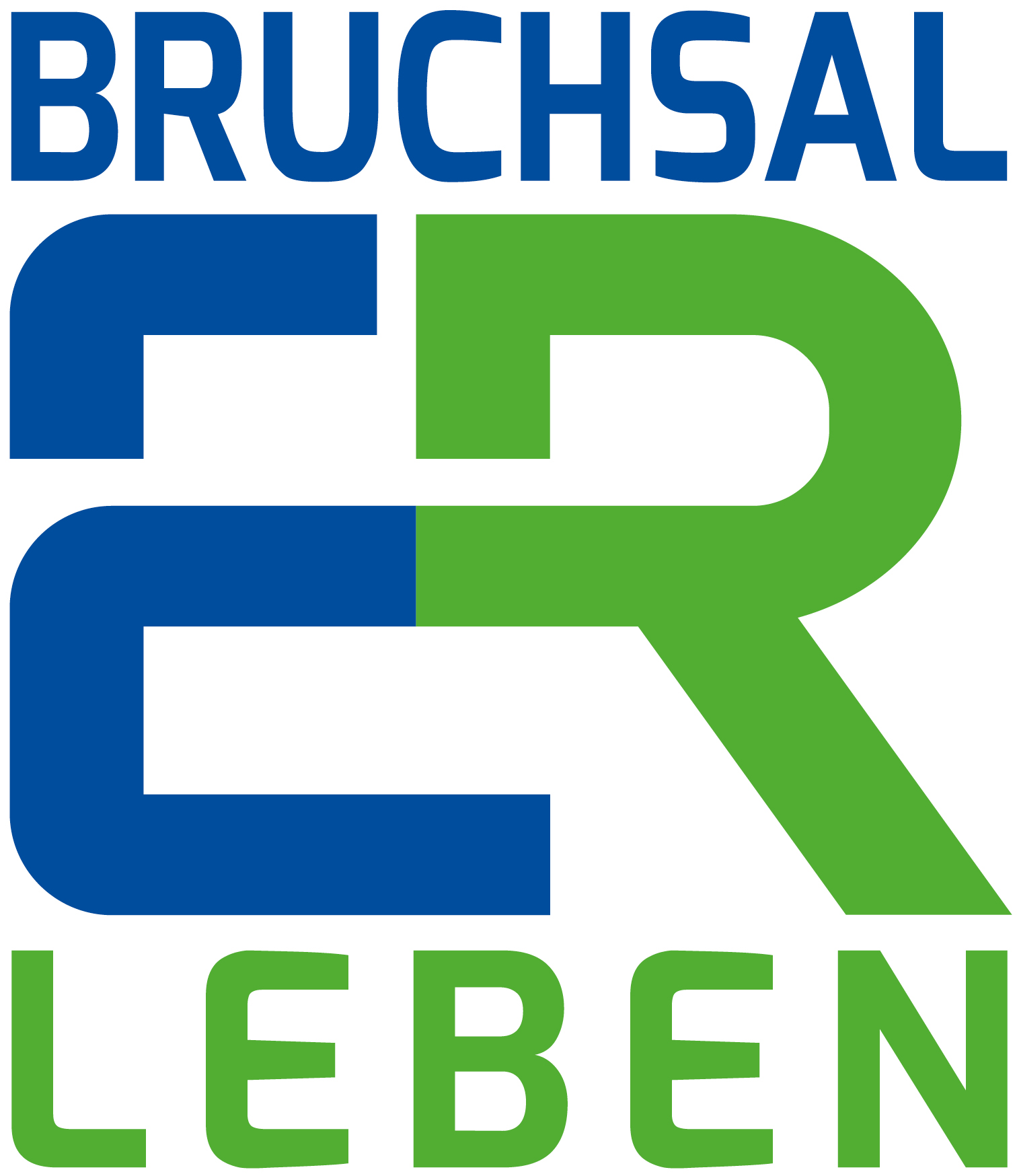Baroque castle Bruchsal



First floor furnished again
The extensive palace complex consisting of over 50 individual buildings was built under Prince-Bishop Damian Hugo von Schönborn (1676-1743) and it took several decades after the foundation stone was laid in 1722 to complete the building were to some extent perfect inside.
Like the city, the castle was largely destroyed in the Second World War. The baroque palace celebrated its first reopening after years of rebuilding in 1975.
2017 the “ Castle of the Year ” was duly celebrated again. Like a butterfly, the Beletage of the castle is transformed back into state rooms with stucco, parquet and silk wall coverings. Where the apartments of the prince-bishops were once located, modern, large-scale exhibition rooms were created in the post-war period.
In Bruchsal Castle, the sequence of rooms on the piano nobile has now been restored as it existed from the 18th century until it was destroyed in 1945.
Fortunately, the original art was relocated during the Second World War and so survived the destruction of the palace. 350 precious tapestries, elegant furniture, paintings and fine porcelain have been extensively restored and are now largely returning to their original locations. In this way, life at the court of the Speyer prince-bishops in the 18th century and the Margravine Amalie von Baden in the early 19th century can be traced again.
The Bruchsal Castle is also home to the Städtisches Museum and the German Music Machine Museum . Its interiors, some of which have been restored to their original state, can also be rented by private individuals and are therefore available for a wide variety of events.
Further information, opening times and prices can be found at
www.schloss-bruchsal.de


